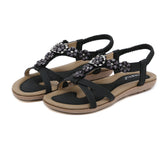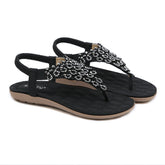The History of Barefoot Shoes:A Journey Back to Natural Walking
Barefoot shoes, designed to simulate the experience of walking barefoot while providing minimal protection, have a fascinating history rooted in our evolving understanding of foot health and natural movement. Here’s a glimpse into the development of barefoot shoes and their growing popularity.
Ancient Times
In ancient civilizations, footwear was simple and functional. People used rudimentary sandals, grass shoes, or leather wraps to protect their feet while allowing a degree of natural flexibility. These early shoes were designed to adapt to various terrains, providing a basic level of comfort and protection without compromising the natural foot function.
Early 20th Century
The early 20th century marked a significant shift in footwear design. Modern shoes began incorporating thicker soles and more structured support to address perceived needs for foot protection and comfort. This shift aimed at improving foot alignment and cushioning but often led to a departure from the natural walking experience.
Late 20th Century
By the late 20th century, there was growing awareness and concern about the potential negative effects of traditional footwear on foot health. Researchers and health professionals began revisiting the benefits of barefoot walking. Studies suggested that natural movement could strengthen foot muscles and improve overall gait. This renewed interest laid the groundwork for the development of shoes designed to mimic the barefoot experience.
Early 21st Century
The early 2000s saw the emergence of modern barefoot shoes. Brands like Vibram FiveFingers and Merrell Barefoot introduced shoes with ultra-thin soles and flexible designs to closely replicate walking barefoot. These innovations aimed to offer a balance between protection and the natural feel of the ground, promoting a healthier foot biomechanics.
Today
Today, barefoot shoes have become a popular choice for both athletic and casual wear. The design of these shoes continues to evolve, focusing on enhancing comfort while preserving the benefits of natural movement. Despite their popularity, the debate over their long-term effects on foot health and performance continues, emphasizing the need for ongoing research and individual consideration.
Barefoot shoes represent a journey back to a more natural way of walking, blending historical insights with modern design principles to offer a unique footwear experience. Whether for health benefits or personal preference, they reflect a growing trend towards understanding and embracing our natural movement capabilities.







Leave a comment
Please note, comments need to be approved before they are published.